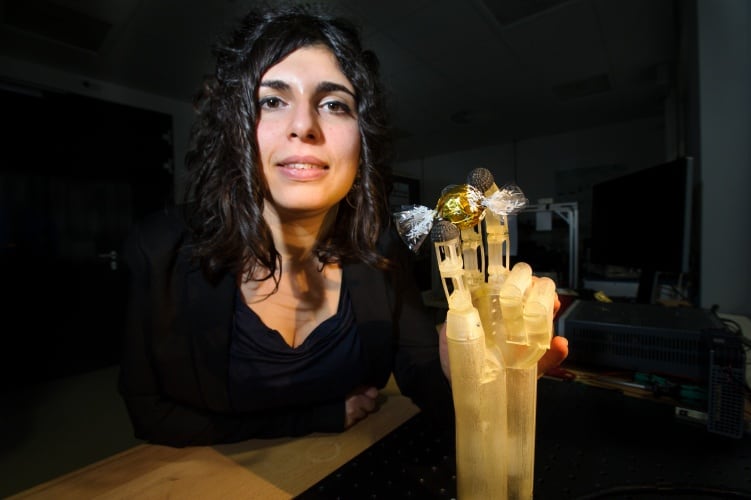Bundles of hair-thin shape-memory alloy (SMA) wires performing duty as muscle analogues could for the basis for a new generation of powerful, lightweight artificial hands both for industrial robots and prosthetics, according to engineers at Saarland University in Germany. The alloy wires can contract and relax, and also act as position sensors within the hand.
Artificial hands often depend on other external systems for their movement, such as electric motors or pneumatics. This makes them complex, bulky, heavy and inflexible. ”In contrast, tools fabricated with artificial muscles from SMA wire can do without additional equipment, making them light, flexible and highly adaptable,” said research leader Prof Stefan Seelecke of the Centre for Mechatronics and Automation Technology (ZeMA) at Saarland.

The artificial muscles are composed of bundles of wire made from a nickel-titanium alloy; each wire being around 30µm in diameter. ”These wires have the largest energy density of all known drive mechanisms, which enables them to perform powerful movements in restricted spaces,” Seelecke said in a statement. The wires are arranged in bundles around the thickness of cotton sewing thread, with one bundle on the connecting the joints on the front side of each finger and another on the back. Each thread has the tensile strength of a thick steel wire.
”Unlike a single thick wire, a bundle of very fine wires can undergo rapid contractions and expansions equivalent to those observed in human muscle”
Filomene Simone, Saarland University ZeMA
Moving a finger in either direction stretches the bundle on the opposite side, and passing an electric current through the stretched fibres warms them up and induces a phase-change in the alloy. ”The material transforms its lattice structure causing it to contract like a muscle,” said Seelecke. The bundle on the front acts like the hand”s flexor muscles (moving the fingers in to grip) and the back bundle acts as an extensor (straightening them out). ”The bundle can rapidly contract and relax while exerting a high tensile force,” said Filomene Simone, a graduate engineering student working on the project for her PhD. ”The reason for this behaviour is the rapid cooling that is possible because lots of individual wires present a greater surface area through which heat can be dissipated. Unlike a single thick wire, a bundle of very fine wires can undergo rapid contractions and expansions equivalent to those observed in human muscles. As a result, we are able to achieve fast and smooth finger movements.”
As the wires change shape, their electrical resistance also changes. A microprocessor inside the hand monitors these changes, allowing the hand to always know what position the fingers are in and enabling fine control of their relative movements, making very precise movements of the hand possible.
The team is now working on modelling movement patterns in real hands and using the sensor properties of the wires to improve their control of its movements in grasping operations, and will be displaying the hand at the upcoming Hannover Messe exhibition in mid-April, where Seelecke hopes to attract development partners for industrial and medical applications.




Red Bull makes hydrogen fuel cell play with AVL
Many a true word spoken in jest. "<i><b>Surely EVs are the best solution for motor sports</b></i>?" Naturally, two electric motors demonstrably...